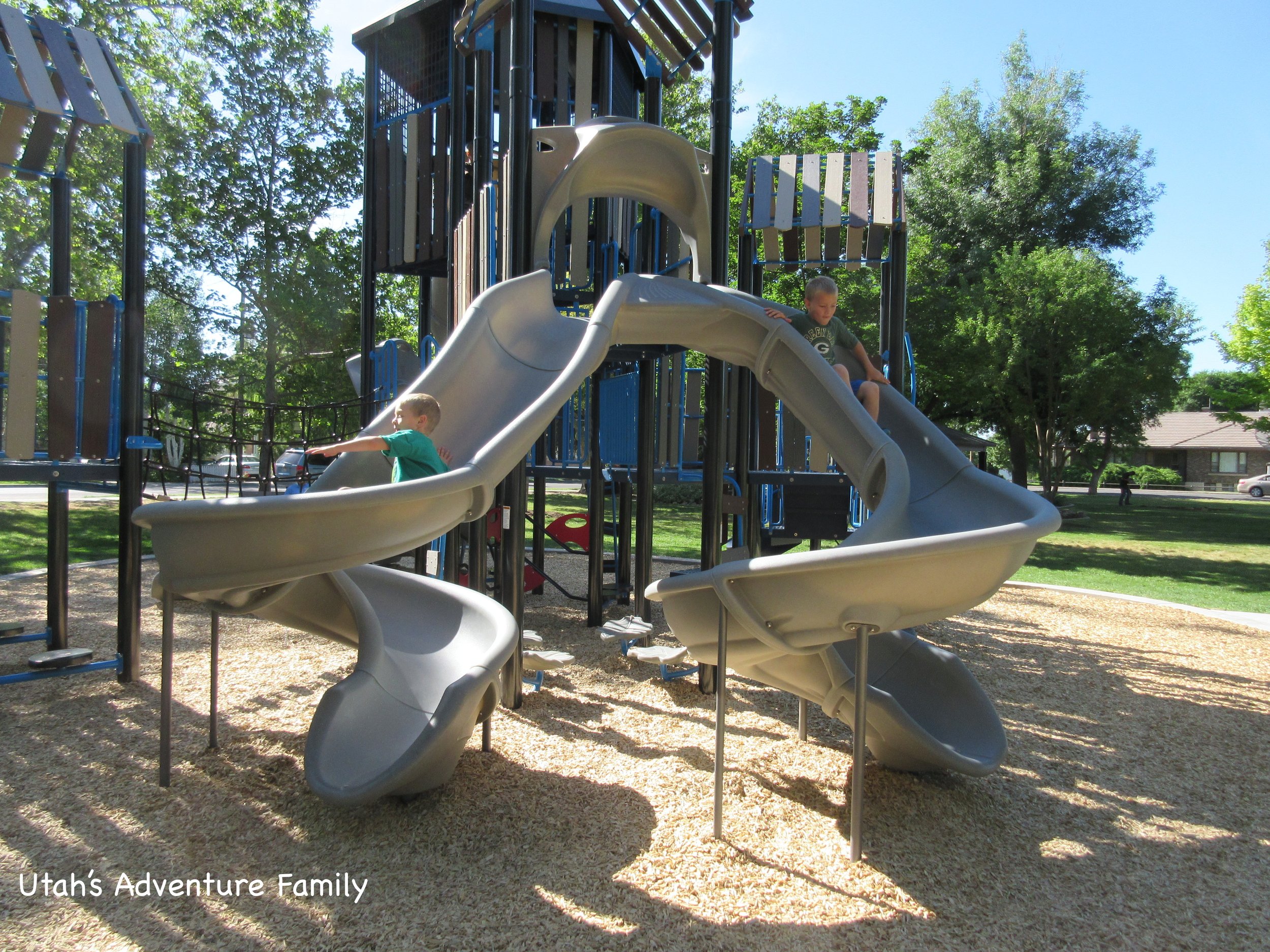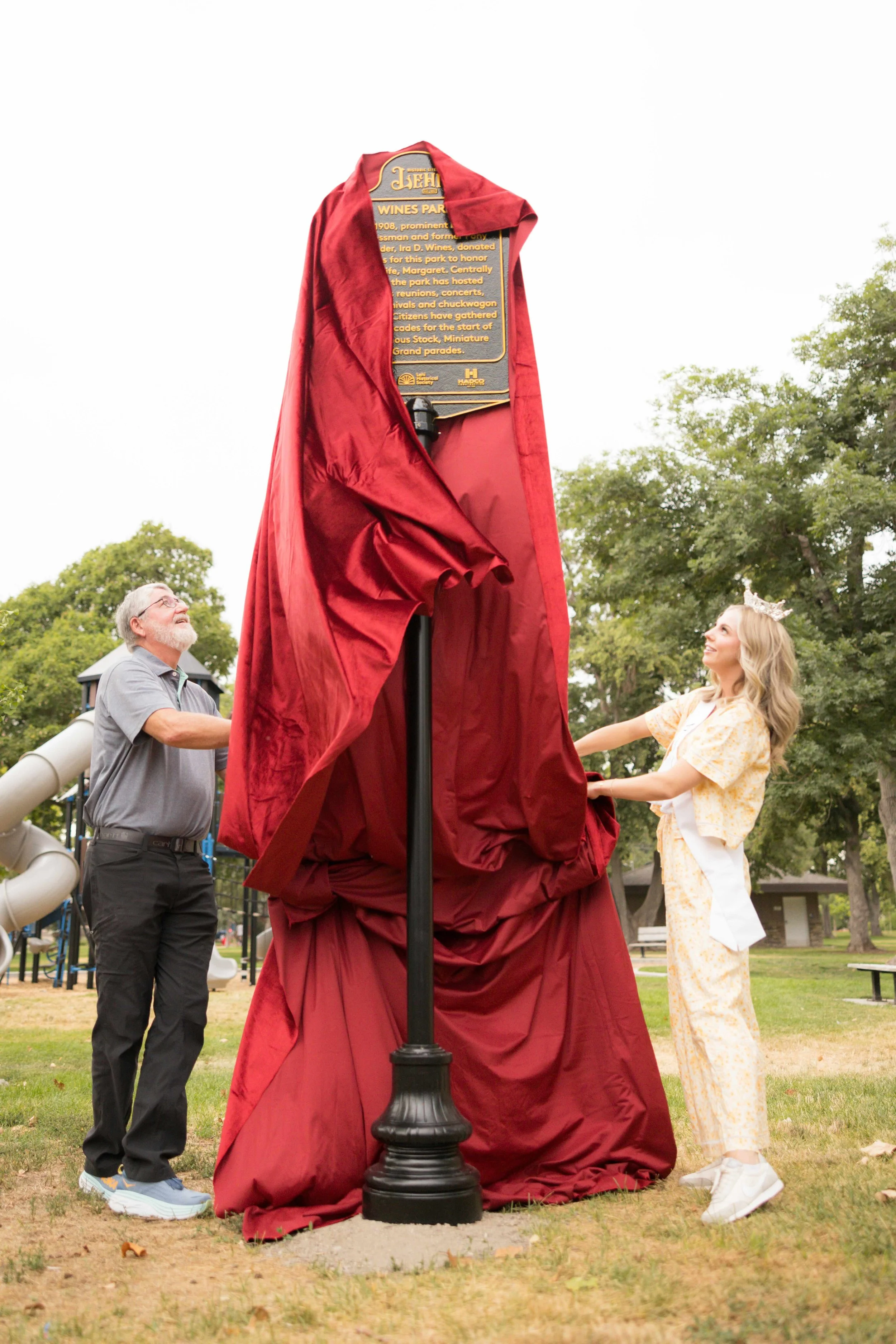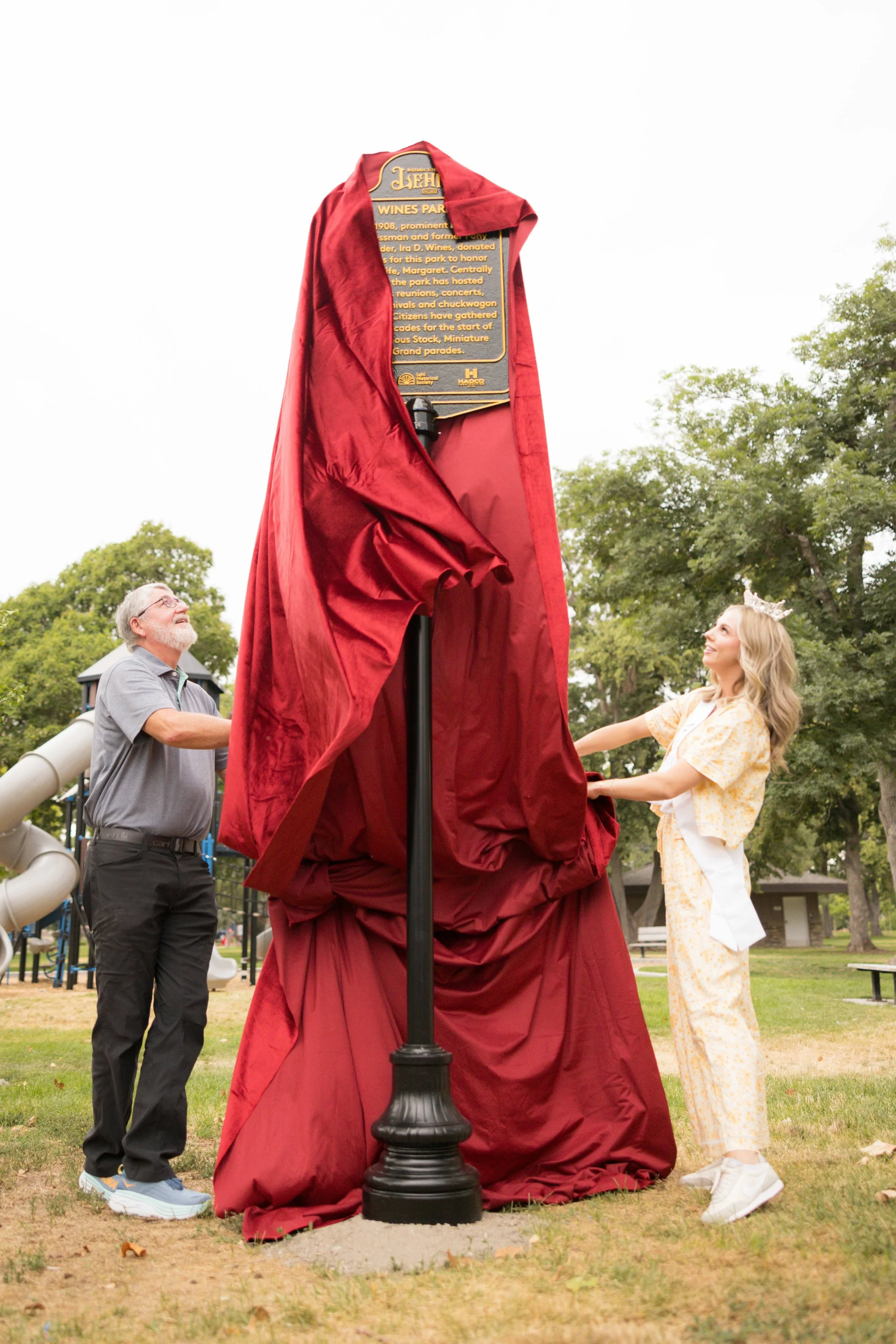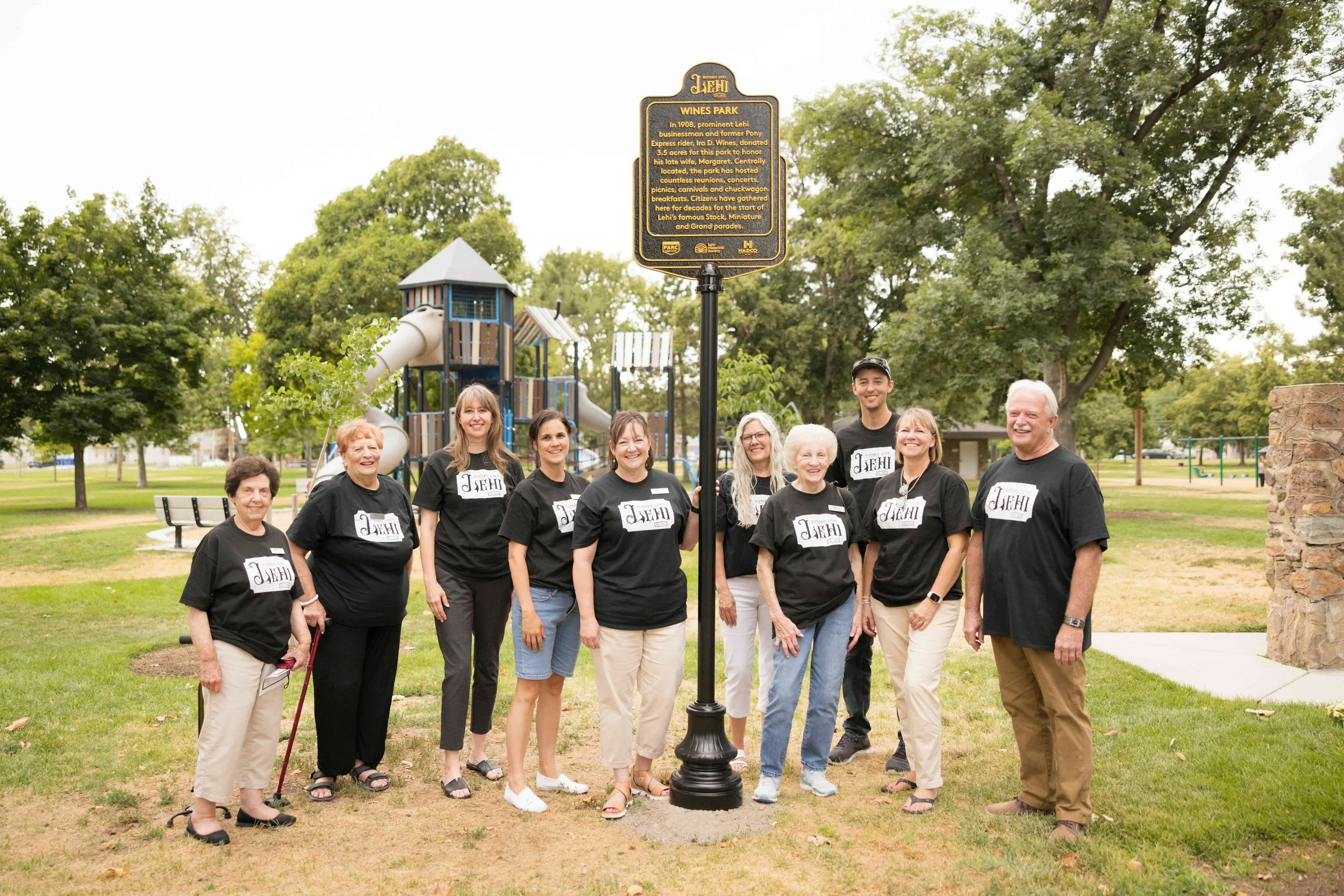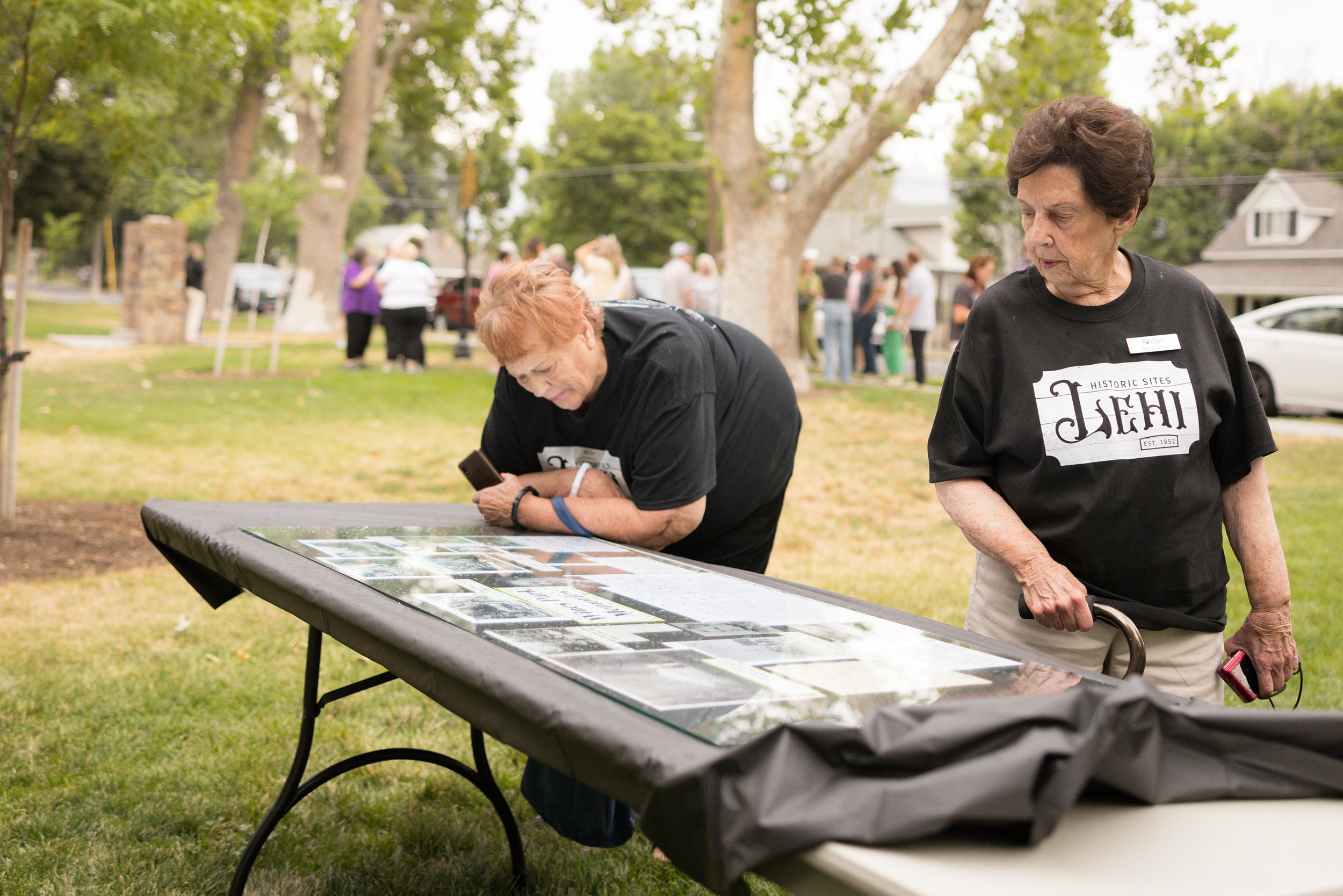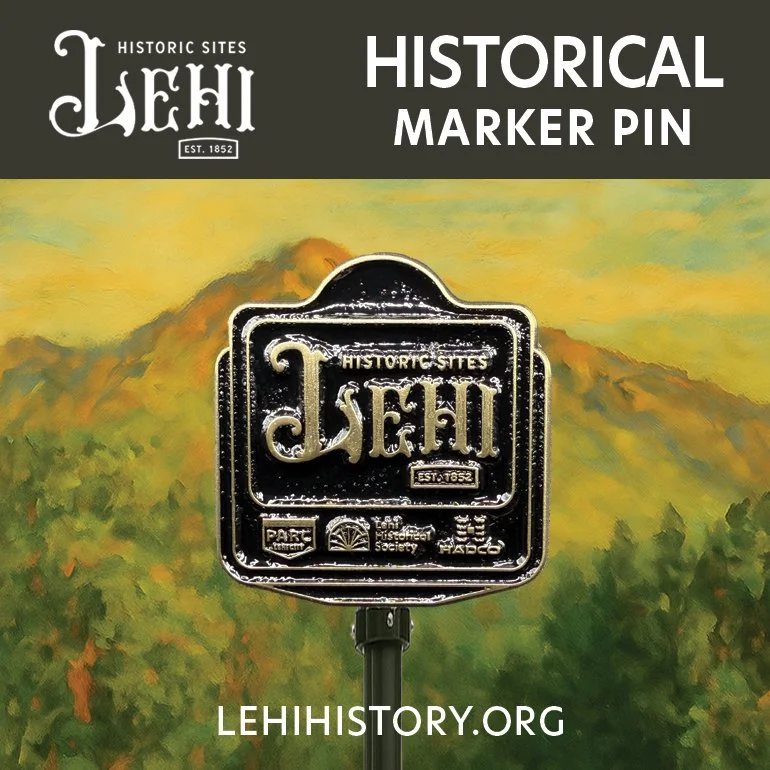
Wines Park
Est. 1908
Since 1916, Margaret Wines Park, located between 500 North and 600 North and between Center Street and 100 East in Lehi, has hosted community gatherings big and small. Black Hawk Encampments, sponsored for years by the Sons of the Utah Pioneers, have seen tent cities fill the park. The starlight concerts that sounded from the first wooden bandstand are echoed today in weekly Sunday performances each summer. A community carnival, first held in 1958 to raise money for the new Hutchings Museum, was a regular summer entertainment for years. Money raised from the freckle contests, greased pole climbs, bake sales, pony rides, pet shows and more went to support many causes after the museum was built.
Today the park serves as the launching ground for the Lehi Round-Up parades and hosts a variety of events during both Round-Up and Heritage Days. Hosting weekly food truck nights, family reunions, work events and more, Wines Park continues to matter because of the efforts of many leaders and citizens over the years. It is a fitting legacy of the life of one remarkable woman, who grew up in the earliest days of the city, and of her husband, who hoped she would always be remembered.
Ira and Margaret Wines
Margaret Taylor was born in Oldham, Manchester, England in 1846. She was a toddler when her family set sail for America in 1848. After long pauses in New Orleans and St. Louis, her family joined the migration to Utah in 1853. Seven-year-old Margaret was lucky to survive the journey. One day she fell from a wagon, and the wheels ran over her body. Somehow, she was up and running around the very next day. Her parents credited her continued health to their faith.
After arriving in Utah, the Taylor family settled in Lehi, building the first house on an official block in the newly platted city—a two-room adobe structure located on the southwest corner of what is now the intersection of 100 South and 100 West. Here, Margaret grew up enduring the devastating poverty and struggle of a new settlement alongside the joys and opportunities of a new community.
Margaret’s mother, Ann, was a strong and resourceful woman who not only did whatever it took to provide for her own children but looked out for the needs of the community around her. Once, facing an outbreak of smallpox, Ann single-handedly inoculated almost all the children of Lehi. Ann and her husband, James, started the Lehi Dramatic Society the year they arrived in Lehi. They were both known as skilled performers, and Margaret followed in their footsteps, regularly acting in Dramatic Society performances. In 1866, Margaret, who was newly married, participated in the launch of the Lehi Sunday School. Her father had shepherded the Sunday School into being, and Margaret was there from the first day, teaching classes for the youngest girls.
Margaret’s new husband, Ira Doty Wines, Jr., was born in Terre Haute, Ind., in 1844. Ira’s father died before he was even a year old. It is unknown how Ira’s mother, Jane, came in contact with The Church of Jesus Christ of Latter-day Saints, but she was baptized and joined the William Snow/Joseph Young Company for the journey to Utah. In 1850, 6-year-old Ira arrived in Salt Lake City with his mother and two older brothers. Not long after their arrival, Jane married William Snow, and they eventually joined the rest of his family in the new town of Lehi.
Even as a child, Ira Wines was never one to sit still. By the age of 14 he was living in Ruby Valley, Nev. Too young and too heavy to be a regular Pony Express rider, he worked as a relief rider at the Ruby Valley station in between gigs as a stage driver and horse herder.
Ira and Margaret wed in Lehi in 1865. After a short time in Lehi, they moved back to Ruby Valley, where they ranched for many years. Eventually, their ranch became a hub for the community and passers-by. It housed the post office and served as a kind of way station and hotel for travelers and herdsmen. Even as they prospered as ranchers in Nevada, the family never let go of their connection to Lehi. They sent their children back to be educated here, and Ira built his wealth through investments in Lehi businesses. He was one of the founders of the Lehi Commercial and Savings Bank and served in the Utah Legislature.
Margaret died in January 1908 in California. Almost immediately, Ira conceived a plan to memorialize his beloved wife in the city that was her home. The family house in Lehi shared a block with Nettie McAffee and Ed Goodwin. Ira purchased their property and, with an entire block to his name, he made an offer: He would donate the block to be used as a city park. Lehi would be responsible for landscaping the park and paying for its upkeep. They would also name it in honor of his wife, Margaret T. Wines.
The Park
The mayor and city council agreed, and the idea was put to a general vote at a meeting held in the Lehi Tabernacle of The Church of Jesus Christ of Latter-day Saints on Apr. 21, 1908. For some reason, despite the enthusiasm the town showed for the donation, nothing much was done with the block until 1911, when a work party was arranged to clear the brush and buildings from the block. Sidewalks were laid on two sides, but enthusiasm waned again and nothing more was done. Rumors started spreading that, because of the city’s neglect, the donation would be withdrawn. Meetings took place between Ira Wines and city officials in 1912 and 1914. Finally, in 1914, Lehi officials, led by Mayor W. F. Gurney, formally re-accepted the gift, and plans were made to develop the land.
The new park was planted with more than 200 trees and as many shrubs in a landscape designed by Nicholas Byhower and engineered by Edward Bercry Jones. A wooden bandstand was constructed, and Wines Park quickly became a center of community activity. Over time, to meet community needs, improvements to the park have come and gone. The wooden bandstand was replaced in 1940 by a two-level cement bandstand. This building was demolished and replaced with bathroom facilities in 1966.
A local literary group, The Athenian Club, erected a rock drinking fountain in 1936. Around the same time, the first playground equipment was added. In 1950 a rose garden was planted, though this was later removed to leave more room for gatherings. A raised platform with large picnic tables was built along with barbeque grills and two brick fireplaces. Today, four covered pavilions, housing 42 tables among them, are available for community use while two modern playground structures and a swing set provide fun and distraction for smaller residents.
Today, Margaret Taylor Wines’ legacy is a quiet, joyful place where families and friends gather surrounded by the sounds of children laughing and playing under the shade of the trees.
By Tierza Rose Askren, 2025
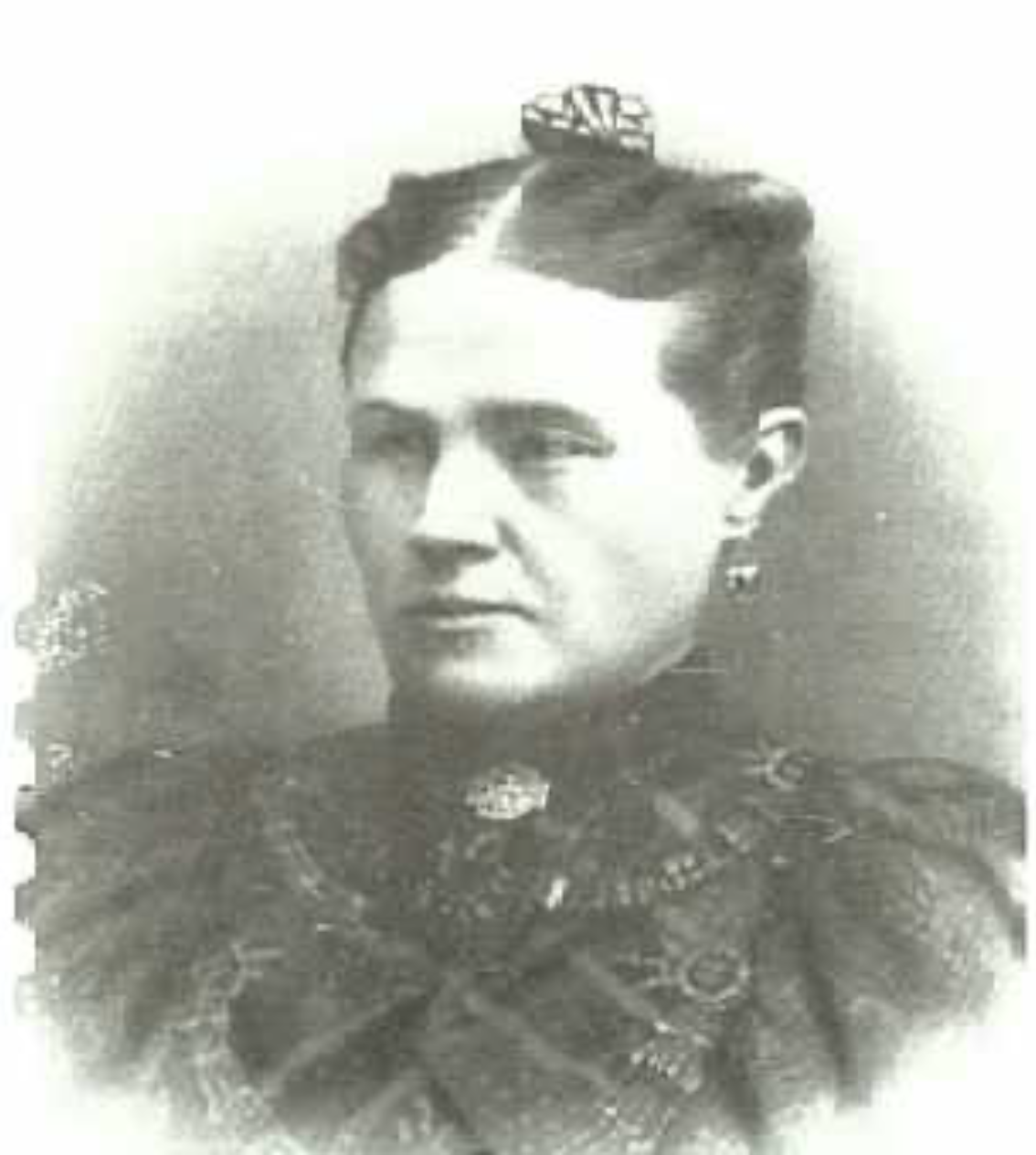
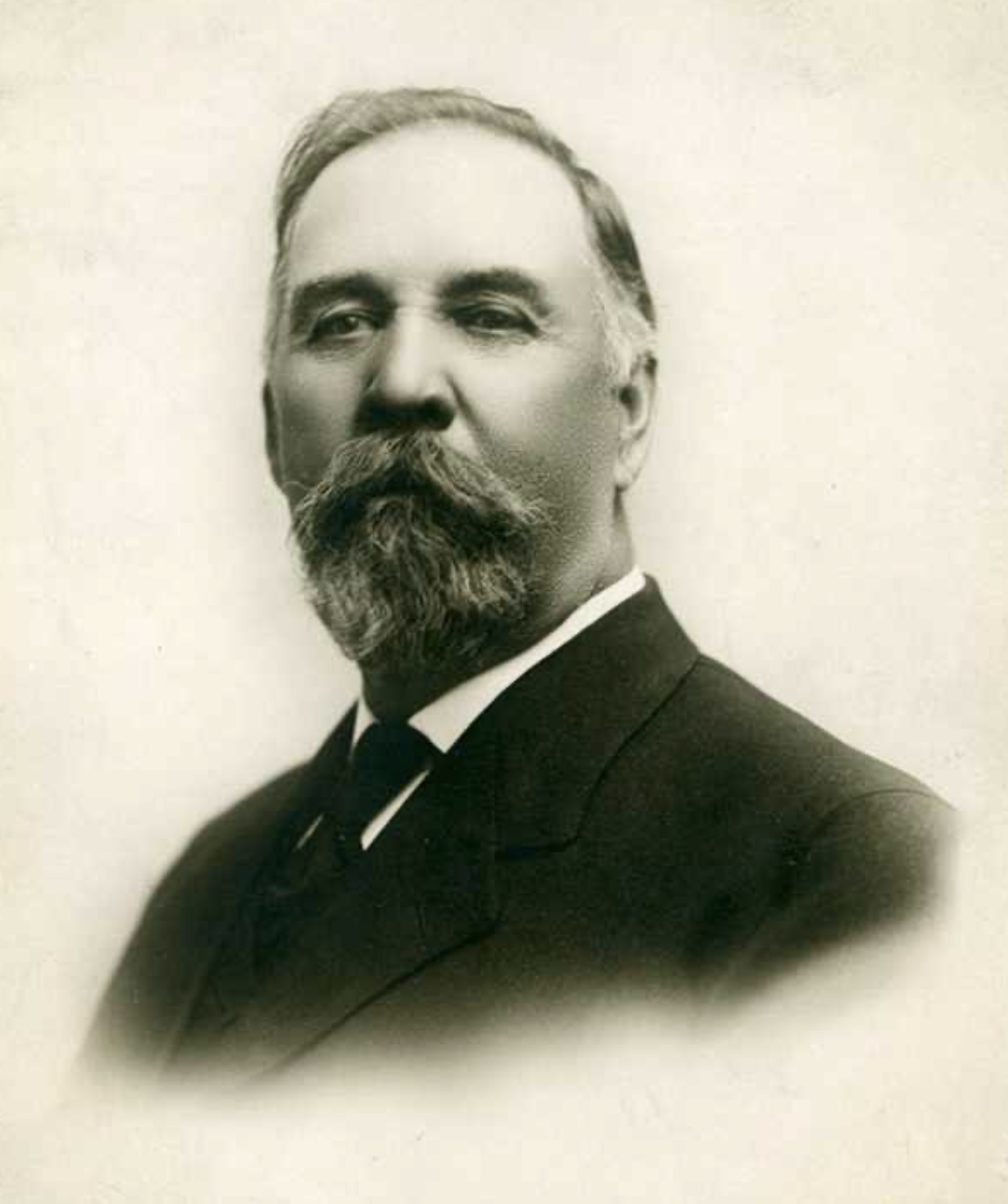

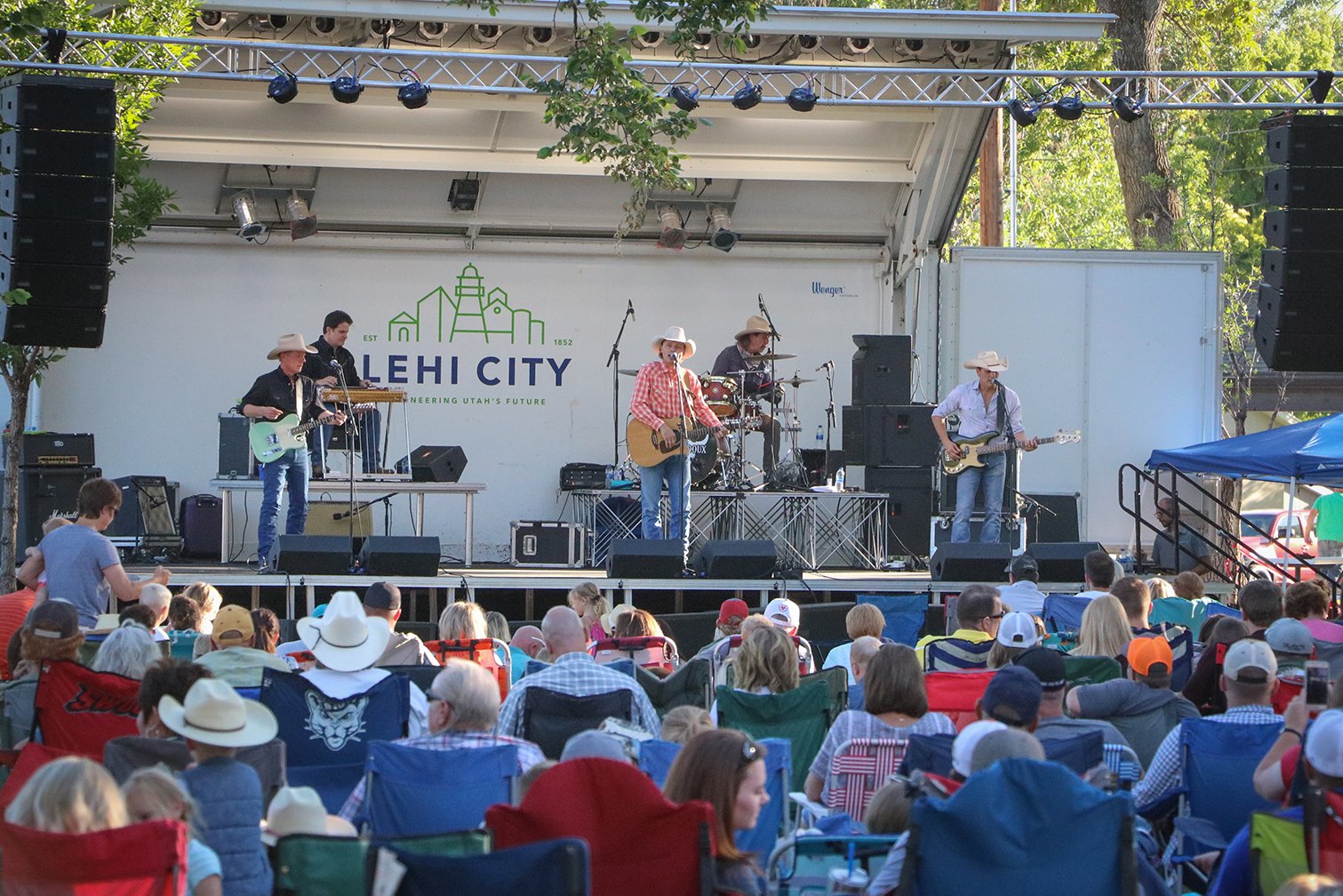
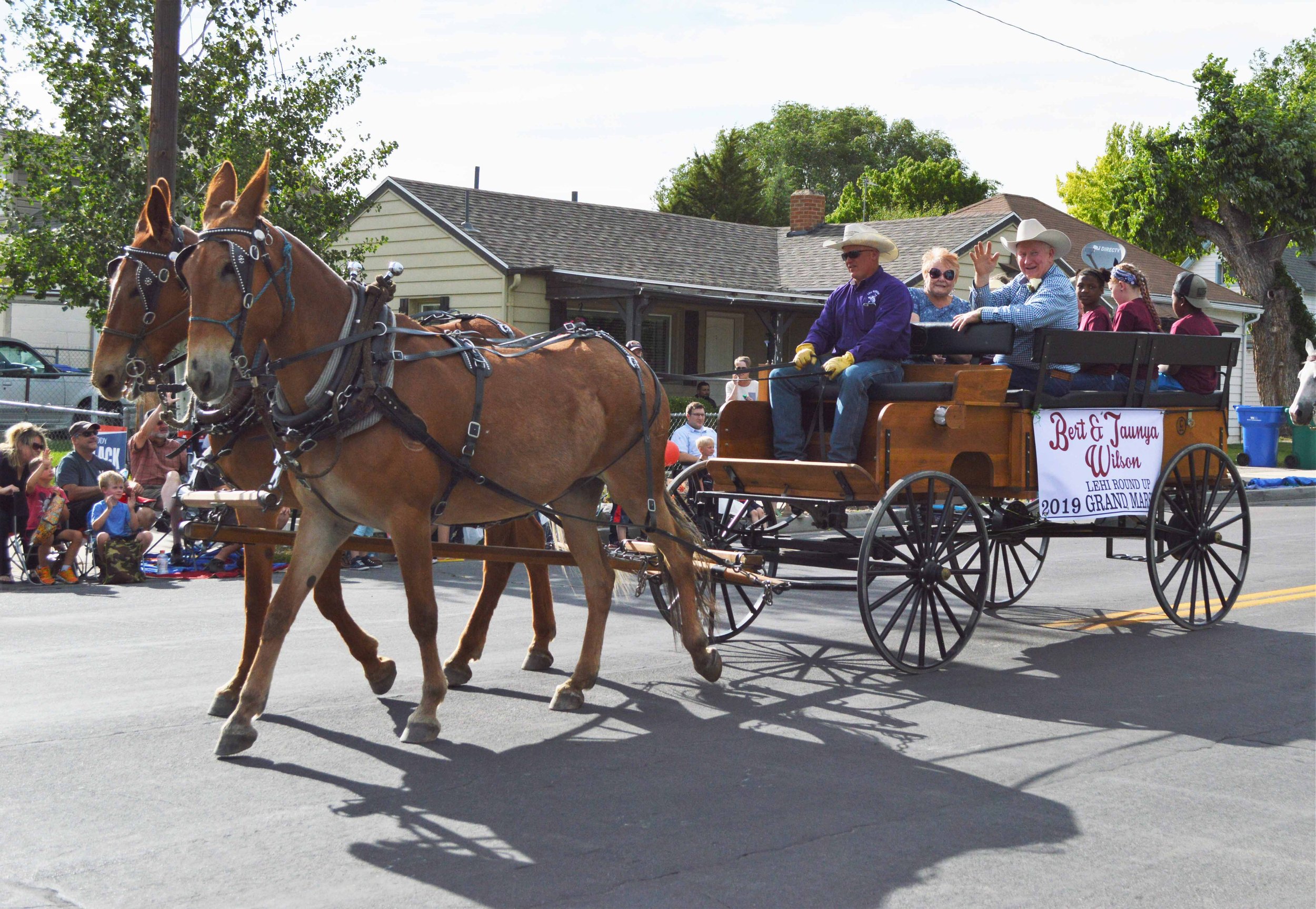
Margaret Wines Park Historical Marker Unveiling
July 18, 2024
Fifty people gathered to honor Margaret Wines Park, Lehi’s oldest existing park and center of many Lehi celebrations. The park was created in 1908, when Ira D. Wines gifted the land to the city if it would maintain it as a park in honor of his late wife, Margaret. The park is Lehi’s oldest existing park and the center of many of Lehi’s celebrations.
City Councilwoman Michelle Stallings paid tribute to the many local groups and clubs that have funded trees, playground equipment, rose bushes, fireplaces, tables, concrete platforms and drinking fountains. “Even though this park began as a gift by one man,” she said, “it became a gift by many over the years.”
The marker is the second of the Lehi Historical Marker Program.
Collector pins celebrate Lehi’s history and support the Lehi Historical Society
Purchase collector marker pins to show your Lehi spirit and support for the Lehi Historical Marker Program and the Lehi Historical Society. There are currently 15 pins available.
100 East 600 North Lehi, Utah 84043
MARKER LOCATION
